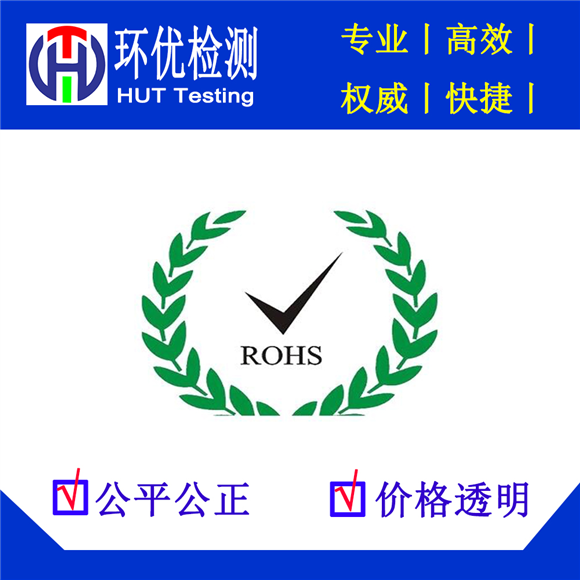
RoHS is a mandatory standard enacted by EU legislation, and its full name is the Restriction of Hazardous Substances (Restriction of Hazardous Substances). The standard was officially implemented on July 1, 2006. It is mainly used to standardize materials and process standards for electrical and electronic products, making it more conducive to human health and environmental protection. The purpose of this standard is to eliminate lead, mercury, cadmium, hexavalent chromium, polybrominated biphenyls and polybrominated diphenyl ethers in motor electronics (note: the correct Chinese name for PBDE refers to polybrominated diphenyl ethers, and polybrominated diphenyl ethers are wrong. A total of 6 substances, with a focus on the lead content of not more than 0.1%.
RoHS directive
The European Parliament and the European Commission issued the Waste Electrical and Electronic Equipment Directive (the "WEEE Directive") and the "Regulations on the Restriction of the Use of Certain Hazardous Substances in Electrical and Electronic Equipment" on February 13, 2003 in its Official Gazette. Referred to as "RoHS Directive", "RoHS Directive" and "WEEE Directive" stipulate that there are 10 categories of 102 kinds of products that are included in the management of hazardous substances and management of waste recycling. The first seven products are the main export electrical products in China. Including large household appliances, small household appliances, information and communication equipment, consumer products, lighting equipment, electrical and electronic tools, toys, leisure and sports equipment, medical equipment (except for implanted or infected products), monitoring and control instruments ,vending machine.
On December 3, 2008, the EU issued a revised proposal for the WEEE Directive (2002/96/EC) and the RoHS Directive (2002/95/EC). The main contents of the revision of the RoHS Directive are:
1. Changed the legal term to clarify the scope and definition of the directive;
2. Introduce the CE mark of the product and the EC declaration of conformity;
3. Incorporate medical devices, control and monitoring instruments into the scope of the RoHS Directive in phases;
4. The six hazardous substances that have been restricted have not changed, but the four substances - diisobutyl phthalate (DIBP), phthalic acid (2-ethylhexyl ester) (DEHP), phthalic acid butyl phthalate Benzyl ester (BBP) and dibutyl phthalate (DBP) - require a priority assessment to investigate whether future inclusion of restricted substances is included.
Until March 21, 2017, the European Union's Chemicals Regulatory Authority (ECHA) issued a warning communication, the European Union Risk Assessment Committee (RAC) and the European Commission for Socio-Economic Assessment (SEAC) supported ECHA and Denmark's request for exposure through skin or inhalation. The following four phthalates are prohibited in the article: di(2-ethylhexyl) phthalate (DEHP), butyl benzyl phthalate (BBP), dibutyl phthalate ( DBP) and recommendations for diisobutyl phthalate (DIBP).
RoHS directive requirements
Manufacturers must consider the ecological assessment of the entire life cycle of their products. The assessment includes analysis of the raw materials used, output, production process, packaging, transportation and sales, installation and maintenance, use, and end of life. The assessment includes an assessment of the consumption of raw materials and energy, an assessment of the impact of the environment, and an assessment of the estimated waste and recycling methods. Products must comply with the ecological design requirements of the Directive. There are two methods. One is to use internal design control, and the information obtained from the test is aggregated and modeled. The other is to record the scheduled production process by executing the “Environmental Management System”. operating system.
RoHS certification scope
27 member states of the European Union: France, Germany, Italy, Netherlands, Belgium, Luxembourg, United Kingdom, Denmark, Ireland, Greece, Spain, Portugal, Austria, Sweden, Finland, Cyprus, Hungary, Czech Republic, Estonia, Latvia, Lithuania, Malta, Poland, Slovakia, Slovenia, Bulgaria, Romania.
The role of RoHS certification
It is to prevent the incorporation and use of components and materials in electrical and electronic equipment, including substances that are prohibited from use in environmentally-controlled substances, plans to abolish substances, and reduce substances (hazardous substances). Protect the global environment and mitigate the deteriorating impact on ecosystems, protect human health, and safeguard the sustainable and healthy development of human society.
RoHS-restricted toxic substances
• Heavy metals:
–Lead lead;
– Mercury mercury;
– Cadmium cadmium;
– Chromium (VI) hexavalent chromium.
• Some brominated flame retardants:
Polybrominated biphenyls – Polybrominated biphenyls (PBB’s);
Polybrominated diphenyl ethers (PBDE's).
The maximum limit indicator is:
• Cadmium: 0.01% (100ppm);
• Lead, mercury, hexavalent chromium, polybrominated biphenyls, polybrominated diphenyl ethers: 0.1% (1000ppm).
Huanyou RoHS Service Project
1) XRF scanning;
2) Quantitative testing of hazardous substances;
3) XRF scanning + chemical substance quantitative test;
4) RoHS2.0 consulting and training services;
5) Provide CE-RoHS technical documentation preparation services according to the harmonized standards of RoHS2.0;
6) RoHS reporting integration.
RoHS certification process
1. Apply for RoHS testing and submit an application form;
2. Our company provides quotation;
3. To make a payment according to the quotation agreement between the two parties;
4. Mail samples to our company;
5. Arrangement for testing matters;
6, the data comes out, passed / failed;
7. Mail the report to the applicant and the test is over.
RoHS certification data preparation
1) Only heavy metal detection: about 5-10g for solids and 5-10mL for liquids;
2) Only the detection of brominated flame retardant: about 10-20g for solids and 10-20mL for liquids;
3) Conducting detection of organic pollutants in heavy metals: providing about 20-30 g of sample;
4) Perform other organic contaminant tests: provide about 30g of sample;
5) Only the sample of the coating (coating) part should be inspected. The approximate weight of the material part of the coating (coating) should be indicated. If the weight of the coating (coating) is less than the required amount of the sample, a coating is required. Coating) raw materials.